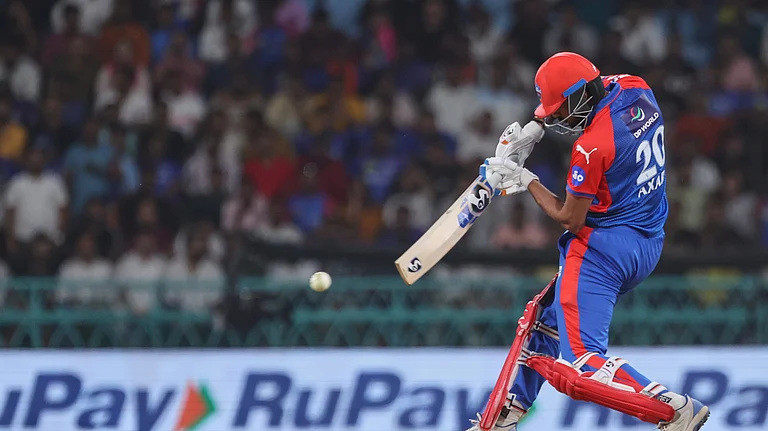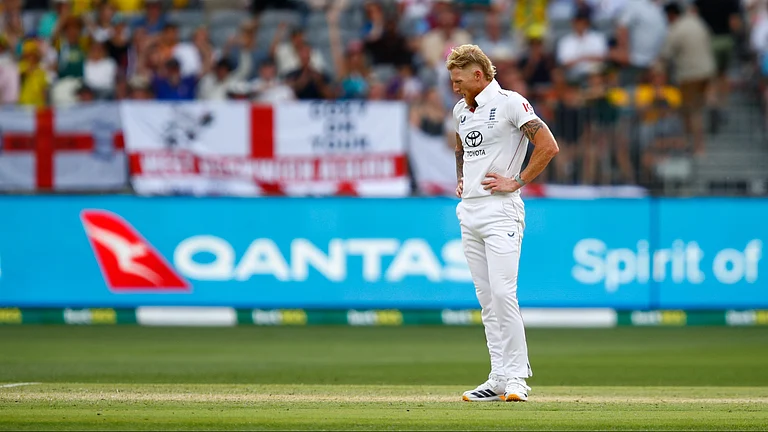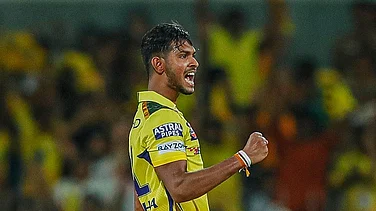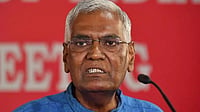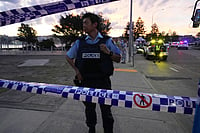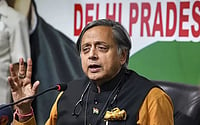Pillay is now one of the most marked men in hockey. His every stride, dribble, even body language have come under increasing scrutiny. In short, he is never left free on the pitch. Perhaps, such attention in itself is a compliment to a player though it would mean withstanding much punishment. "Over the years, I have got used to it and accept it as part of the game,'' the dasher shrugs it off with a flick of his shoulder-length hair.
Since making his debut for India in the 1989 Asia Cup in Delhi, Pillay has emerged as one of the world's finest centre-forwards. Such a status may not be reflected in the number of his goals, but he has terrorised many a defence. For many teams around the world, the dashing centre-forward signals danger and should be stopped at all cost, every time.
Pillay's goal-scoring skills have only emerged in the last 12 months. Says Ajit Pal Singh, national selector and the captain of the 1975 World Cup winning team: "He's outstanding and skilful. He used to be selfish. But I pointed this out and he seems to have learnt to play with the team and score goals as well. He was selected in the World XI after the Sydney World Cup and this speaks volumes for his talent and world standing. I feel he can even rank with the great centre-forwards of my time.''
Another stalwart of the team of '75, Ashok Kumar, agrees with his former captain that Pillay used to be selfish but has changed dramatically. "Earlier he didn't utilise his talent. But now he combines well with other forwards...this has made all the difference. His beauty lies in his speed, which allows him to get past any defence.'' Ashok, son of the legendary Dhyan Chand, however, refuses to make comparisons with past generations of players.
One recalls Pillay's performance in 1991 during the Olympic qualifying tournament in Auckland, when he bulldozed past the towering Russian defenders as if they did not exist. Almost every time that he gained possession, Pillay managed to penetrate deep and create penalty corners where none existed.
The explosive acceleration is what wrong-foots the defenders and not so much his dribbling, as he himself admits. In Barcelona, during the qualifying rounds for Atlanta that ended on January 28, Pillay said: "I'm not a natural dribbler. My assets are really speed and thrust. I trained myself in skills such as dribbling and stick work only after watching my hero, Mohammed Shahid. I have a 60-minute video of Shahid and I often watch it just to remind myself what a great player he was."
Pillay's goal-scoring spree has only just begun, seven years after he first played in an international game. He went through a bad patch during which nothing clicked for him and a goal by him was news. "When we were coached by Balkishen Singh, he had a preference for the 4-4-2-1 system. It meant I was pushed to either the left wing or inside-left with Jagbir Singh in the centre-forward position. I did not get many opportunities to score and I fell into a rut," he admits.
Picking and weighing his words, and breaking into Tamil or Bombay-style Hindi, he traces his career. He comes from a hockey-playing family of humble means. Three of his brothers—Ramesh, Ganesh and Vijay—played at the national level, with Ramesh donning India's colours in a seven-nation tournament in 1985. "I took to hockey quite naturally. My father Nagalingam, too, had played some hockey. When I shifted to Bombay to play for Mahindra and Mahindra, I came under (Olympian) Joaquim Carvalho. For what I am today, I owe it to Carvalho."
In the early days, Pillay was an out-and-out right-winger. He made his debut thus in the Asia Cup. "It was only in 1992 that I turned centre-forward. I am now so comfortable, I just can't play on the wings or inside. Of course, for the team, I'm willing to play anywhere."
His first year as a striker, he depended purely on his running and thrust. "In March 1993, I signed up with FC Lyons to play in the French league. Their coach Toni Fernandez, who had played for India, taught me a few tricks on how to dodge my marker. He gave a final shape to my game with some intensive coaching. I sharpened my skills in ball control, dribbling and shooting. I also realised it isn't the time you spend training but quality which mattered. Yes, that was the turning point," he explains.
He still recalls fondly his goal against Pakistan during the 1989 BMW tournament in Germany, which he places on a par with the one against the same team at Madras last month. "The BMW goal gave me tremendous satisfaction. Jagdev Singh took a 16-yard hit. Centre-half Vivek Singh trapped the ball and passed to left-winger Thoiba Singh. He did a 1-2 with me before crossing the ball into the circle. A deflection led to a long corner. Thoiba took it and I dived to deflect the ball into the net from zero angle to the second post. The umpire and the Pakistani player didn't know how the ball got in!" Of course, it was goal. Pillay is now a vital cog of the Indian team, especially in combination with right-winger Kumar. Chief coach Cedric D'Souza says Pillay is "our main weapon. We can depend on him for breakthroughs".
Fame sits lightly on his shoulders—he is too sensible to indulge in self-aggrandisement. "Please don't compare me with any of the great players. Of course, I haven't seen Dhyan Chand...appar-ently, he was the greatest. Shahid is my hero. Frankly, we're different kinds of players. I still have to develop some aspects of my game, for instance, I'm working on timing my run into the circle to meet the crosses from the wings. Jagbir was the best in this department," he says.
Former coach Zafar Iqbal feels that Pillay is one of the best in the world. "He is very thrustful and fast.'' In his early days as an Indian player, Pillay came under Olympian MP Ganesh, a hard taskmaster like D'Souza. Ganesh, having been a forward himself, whipped Pillay into shape as one saw during camps in Bangalore. The former Indian captain also rates Pillay very highly.
As one of the architects of India's gradual claw-back to the top since last year's Sydney World Cup (where we, creditably, finished fifth), Pillay's role in Indian hockey's recent history is undoubtedly major. Says D'Souza: "The difference between the top six nations is little: on a given day, anyone can beat the other. In this context, I think, India can be bracketed with Pakistan, Australia, Germany and Holland."
The recent victories against Olympic champs Germany in the Azlan Shah Cup at Kuala Lumpur, against Pakistan at Madras, and against Holland at Barcelona—they all point to India's steady progress. These triumphs can't be dismissed as a flash in the pan; each win was earned against sides at full strength, except Germany who fielded a young side in the Azlan Shah Cup.
As D'Souza said after India qualified for Atlanta, the focus has always been on the Olympics. "No doubt, we beat Germany, Pakistan and Holland. But you have to view these wins in the proper perspective. Our focus should be on Atlanta. It's important for Indian hockey that we win an Olympic medal."
The present side has a settled look about it, which augurs well. Quite the best thing that could have happened is that the players, individually and collectively, believe theirs is one of the best sides. Far from being falsely modest, Pillay describes the mood: "This is one of the best teams I have been part of. You know, we have this gut feeling that we would be on the victory podium in Atlanta. I am confident of it."
Big words, no doubt. But having watched the side for the past one year, one feels the confidence is maybe not too out of place. Rather, one finds it infectious.







